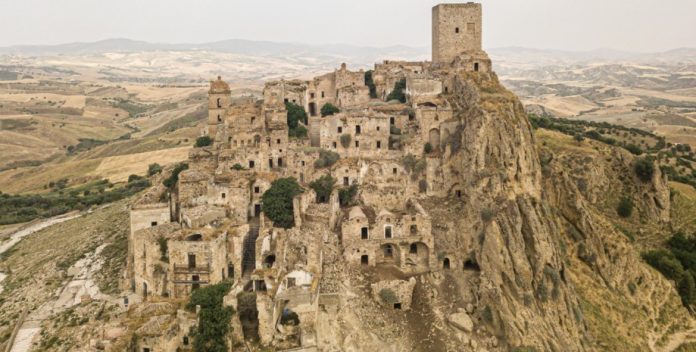In the south of Italy, in the region of the basilicate, Kracot stands-an abandoned medieval city, which has turned from a once prosperous settlement into one of the most prominent ghost cities. Its dramatic location on the rocky slope between the rivers Agri and Salandsrella Kakonne and still strikes tourists and artists with his mystical atmosphere.
Krakko dates back to the XIII century and for centuries has been the center of religious and cultural life. Historians believe that the city could have a connection with the Order of the Templars. In its architecture, it is still tangible to the era of that era: fragments of churches, monasteries, markets and ancient fortress are preserved among the ruins. However, Kraco's story is also a story of decline. At the end of the nineteenth century, the city began to suffer from regular landslides. The culmination of 1963 was the crash, when a large part of the population was forced to leave homes and move to the newly created settlement of Krakko-Pescher. Experts believe that not only natural factors, but also human intervention, in particular, improper construction of water supply and earthworks, could be the reason.
The final evacuation occurred after the 1972 flood and destructive earthquakes in 1980. Since then, Kraco has turned into a deserted city, but not forgotten: its silence and destroyed streets attract tourists, artists, historians and cinematographers from all over the world. The city was an inspiration for big cinema. Here they filmed scenes for the films "Quantum of Mercy" (from the series about James Bond), "The Passion of Christ" by Mel Gibson and the cult Italian drama "Christ stopped in Ebol". In 2008, Kraco was included in the list of priority objects of the World Fund of Monuments. For the safety of visitors and preserving cultural heritage, the entrance to the city is strictly controlled: tourists can get there only with a guide and in a protective helmet.
Today Kraco is not just ruins. It is a memory of the past, frozen in stone, of beauty that nature has not destroyed. And at the same time, it is a new life of the city that has found a second breath in art, tourism and human imagination.


